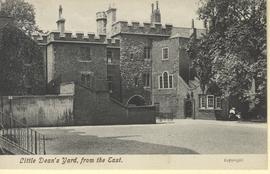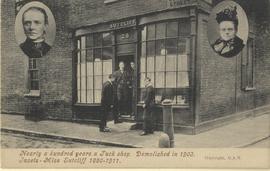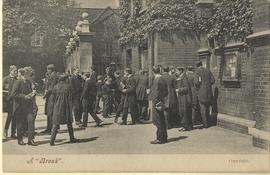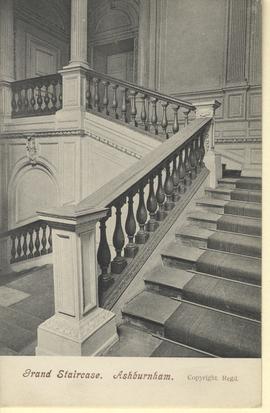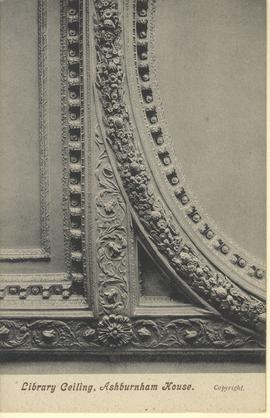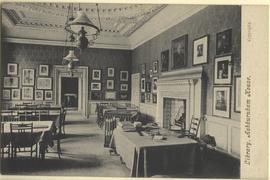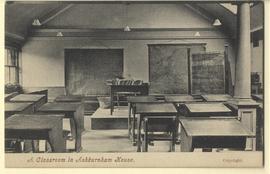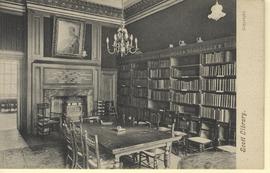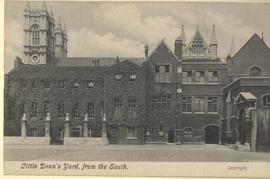Little Dean's Yard, from the East
- GB 2014 WS-02-POS-01-31
- Item
- c.1911
One copy annotated on reverse by R.S. Chalk, as follows:
'1919-1924
On the right (then as to this day I hope) is Liddell’s tree. Beneath it the tiny and cramped Bursar’s Office, where the devoted and conscientious but unsystematical JJ Tyson (Ti Ti) laboured six days a week throughout the year (never a holiday save half-a-day for Diamond Jubilee, 1897). Report had it this Office was in such confusion that the Pashley Bowling Cup was mislaid there for 3 years, under piles of files, letters and records.
On the ground floor (hidden in picture by the Fives Courts) was the Masters’ Common Room - fittingly described to me by Mr. Smedley when once I appeared at its doorway on urgent business as “The Holy of Holies”
Above it (17 Dean’s Yard) was H.BB (now Wren’s, I think - but surely Wren was never a House Master, like Rigaud?)
It always puzzled me how 80+ Home Boarders fitted in there, complete (presumably) with Upper and Under. H.BB in my day were a boisterous House, but good-hearted - more congenial generally than A.HH (I speak of course as a K.S!)'

